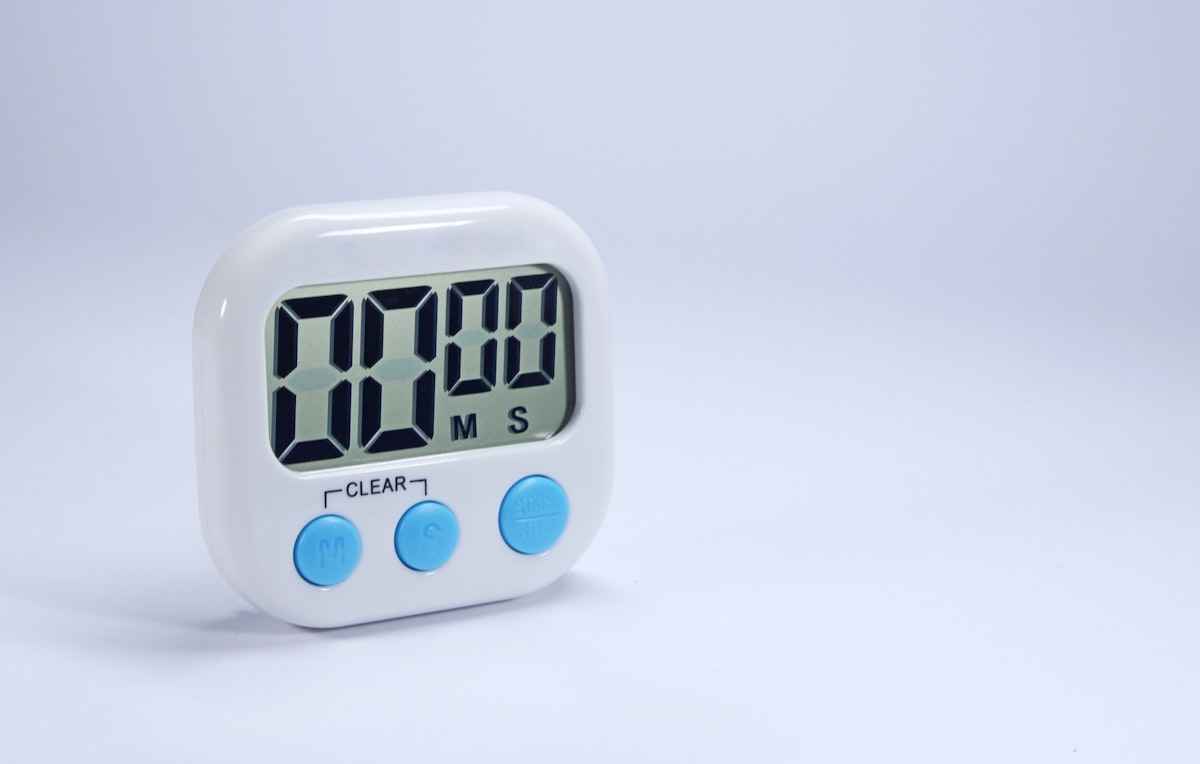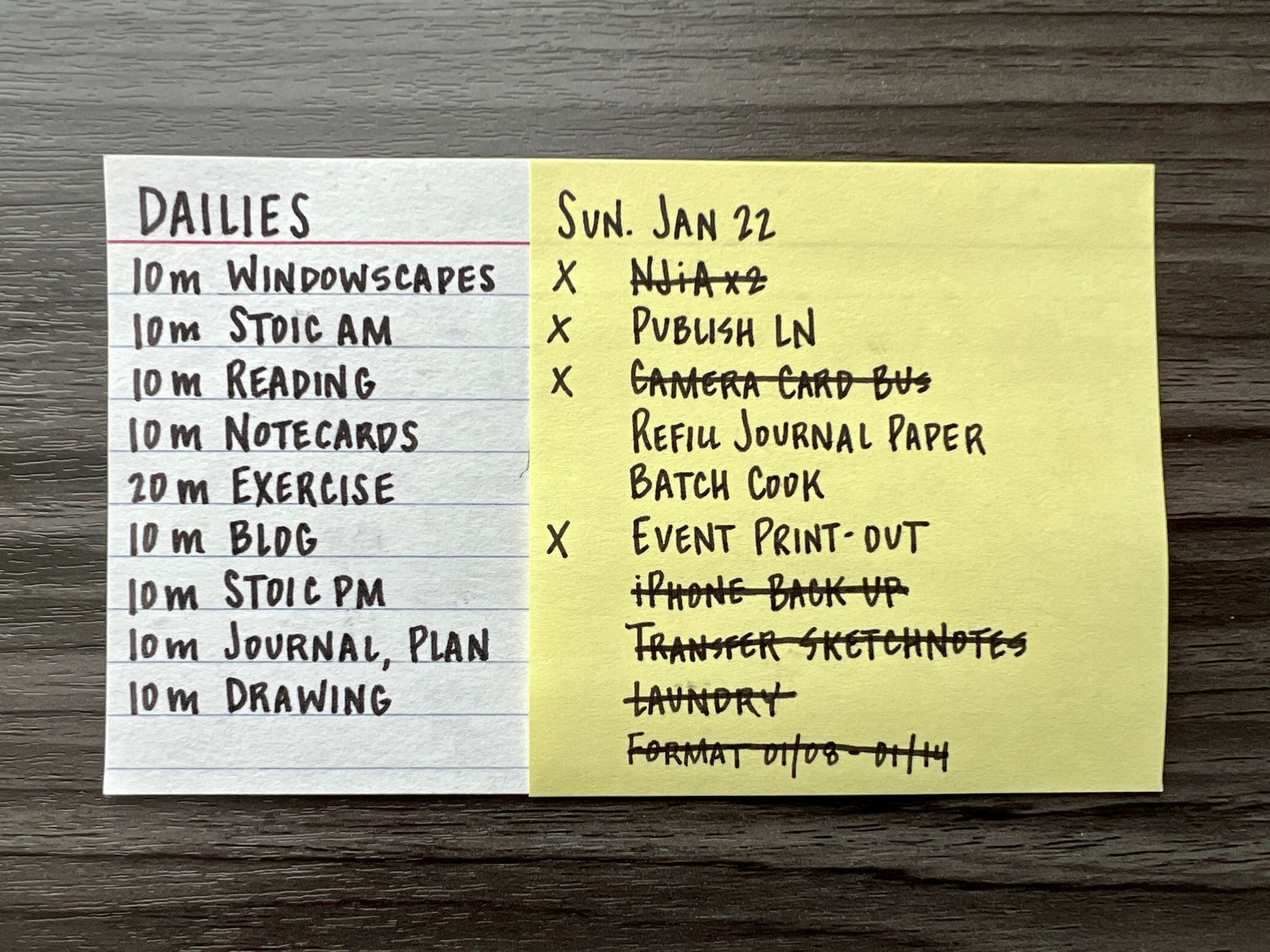The ten minute rule
Some is better than none and “doing” leads to “done”.

Last week, I conducted a weeklong challenge to see if I could integrate a few activities I’ve been wanting to do more regularly into my daily routine.
I was inspired by Craig Benzine (aka Wheezy Waiter) who ran a similar experiment in 2020. Craig’s goal was to begin chipping away at some larger projects he had been avoiding due to their perceived size by breaking them into smaller, more approachable ten-minute chunks. Craig’s logic: “Just say you’re gonna do a thing for ten minutes. Everyone usually has ten minutes, but a little is better than none.” ✅
Craig dedicated ten minutes per day for seven days toward each of the following activities: 1. write a story (“...or something”), 2. write a song, and 3. clean the garage.
The rule: Once ten minutes have elapsed, stop the activity regardless of whether you want to continue (this is so you’ll have enough motivation to start again the next day).

For Craig, the stopping part of the challenge was just as important as the starting part because it helped him reinforce in his own mind that ten minutes really meant ten minutes. When he set out the next day to start again, he could trust that the task ahead was limited in time and therefore less daunting.
My take on the ten minute rule
I decided to try this challenge but with a couple of slight tweaks. Rather than using the ten minute rule to tackle large projects as Craig had done, I used it to help me get back into (and start) several daily habits (dailies) I had been wanting to implement into my routine.
In addition to my daily windowscapes which I began in late 2022, I wanted to begin reading daily again and also wanted to make sure I kept up with my notecards that go along with my reading. I wanted to see if writing this blog for ten minutes per day during the week could help lighten my writing workload on weekends, when I typically write my article in a couple of sittings. Finally, I wanted to try to draw something from life for ten minutes each day (I draw nearly every day, but a lot of evenings, I only do “mark making”, which isn’t the most effective practice).
My dailies list
Each day, I place a sticky note on my index card of dailies with today’s date. The left-hand side is where I check off each of my dailies once they’ve been completed. On the right-hand side, I list out my day-specific personal goals and cross those off as I complete them. Once the day is nearly finished, I replace the sticky note and plan the next day. This way, the next day’s goals are already before me as I head into the next morning.

Some ground rules
I was faced with a few questions during this challenge which led me to create a few ground rules. They were:
- What happens if I go over ten minutes?
- If I go over, does the extra time carry forward?
- What happens if I come in under ten minutes?
- If I come in under, does the debt carry forward?
What happens if I go over ten minutes?
Like Craig, I decided it would be best to try to rein myself in if I went over ten minutes, regardless of how much I might want to keep going. This way, on busier days, future Brooke can believe the task really will be just ten minutes.
If I go over, does the extra time carry forward?
No. Let’s say I read for twenty minutes instead of ten. That’s fine, but the extra reading won’t go toward the next day’s reading goal. I decided not to carry the extra time forward because I’m specifically trying to build a daily habit and to reinforce certain behaviors. To do so effectively, I need to consistently show up for the activity.
What happens if I come in under ten minutes?
If I come in under the time limit, I have to make it up the next day.
If I come in under, does the debt carry forward?
Yes. While I don’t carry over a positive balance because I want to reinforce a daily habit, I do carry over any debt I might accrue when I don’t hit a goal for accountability purposes. This is meant as an incentive to not let the habit slip.
My takeaways
I liked finding a way to fit all these items into my daily life more consistently. I was able to hit all my goals each day except for one day, when I didn’t have enough time to complete all my dailies due to other projects. I found the rules about balances and debts to be useful for both habit reinforcement and accountability, so, I plan to stick with this structure, at least for now.
Will I continue to use the ten minute rule? Yes. My list of dailies will of course evolve, but the concept itself worked well and the ten minute rule did help make doing all these things feel possible and sustainable each day.
Some is certainly better than none and this system kept me engaged with activities I care about on a daily basis despite how busy life became (okay, except for that one day 🙂).
Is the ten minute rule a good idea for you?
The ten minute rule is great if you’re looking to build a habit and have an activity which is flexible enough to easily start and stop. The ten minute rule won’t be as effective, however, if you use it on projects that require a lot of setup and/or break-down time (i.e. painting a house) each session. In general, it’s a great method for making progress by helping yourself get started.




